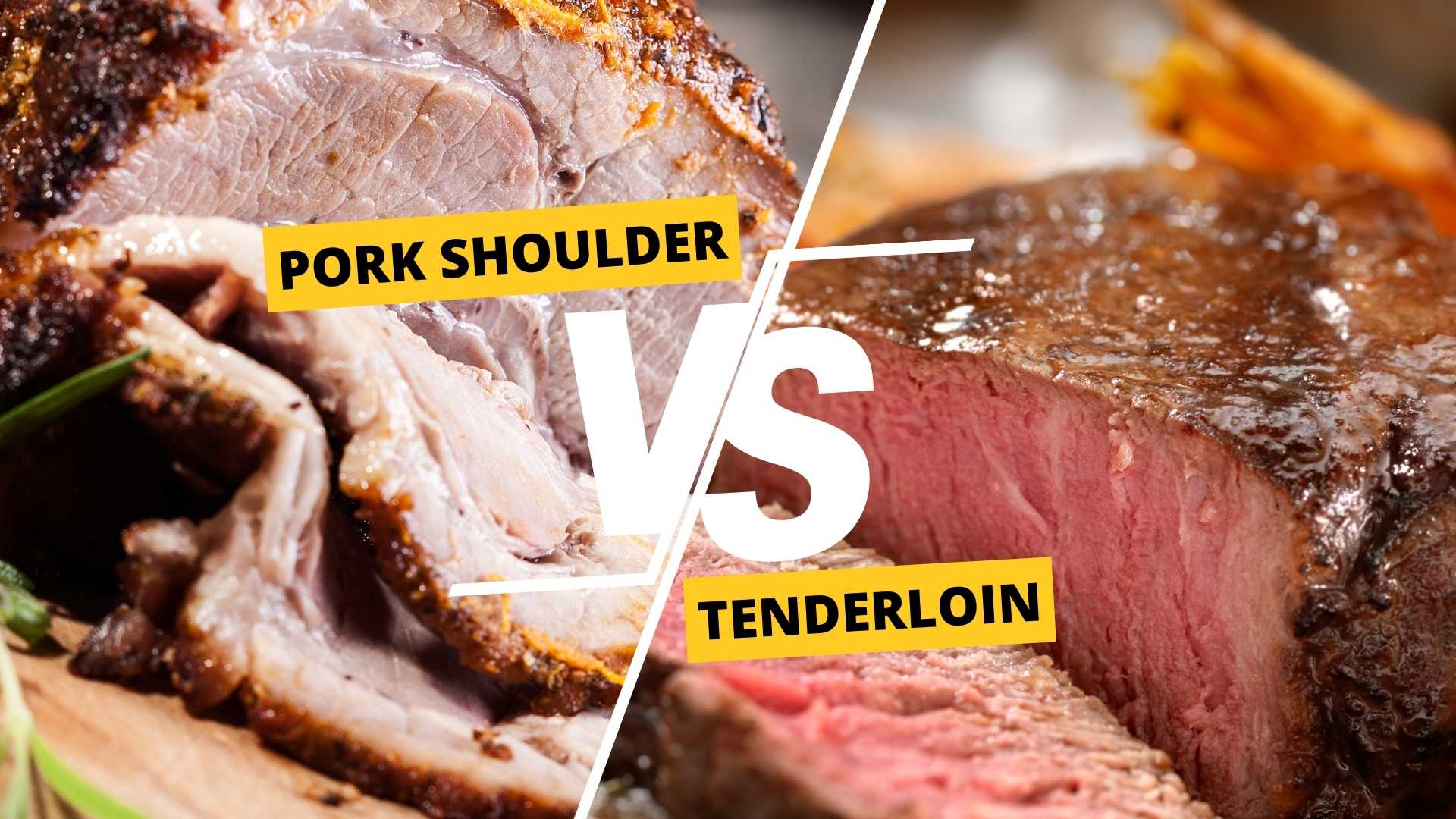Pork is a popular meat for many reasons, including its affordability, versatility, and delicious flavor. But with so many different cuts to choose from, it can be difficult to know which one is best for a particular recipe. In this article, we’ll be comparing two popular pork cuts – shoulder and tenderloin – to help you decide which one is right for your next meal.
Pork shoulder and tenderloin are two of the most commonly used pork cuts in cooking. Both are delicious, but they differ in flavor, texture, and cooking methods. In this article, we’ll explore these differences and help you determine which cut is best for your recipe.
Compare Pork Shoulder vs Tenderloin
Flavor and Texture
One of the main differences between pork shoulder and tenderloin is their flavor profile. Pork shoulder is a well-marbled cut, which means it has a lot of fat running through it. This fat contributes to its rich, juicy flavor and helps to keep the meat moist during cooking. Pork shoulder is often used in slow-cooked dishes, where the fat has time to melt and infuse the meat with flavor.
Tenderloin, on the other hand, is a leaner cut of meat. It has a mild, delicate flavor that pairs well with a variety of seasonings and spices. Unlike pork shoulder, tenderloin does not have a lot of connective tissue, which means it is tender and has a softer texture. This makes it a great choice for quick-cooking methods like grilling or pan-searing.
Cooking Methods
The cooking method you choose can also play a role in determining which pork cut to use. Pork shoulder is a great choice for slow-cooking methods like roasting, braising, or smoking. These methods allow the fat in the meat to melt slowly, infusing the meat with flavor and making it tender and juicy.
Tenderloin, on the other hand, is best cooked quickly over high heat. This helps to keep the meat tender and prevents it from drying out. Grilling, pan-searing, or roasting at high temperatures are all great options for cooking tenderloin.
Cost and Availability
Another factor to consider when choosing between pork shoulder and tenderloin is cost and availability. Pork shoulder is a more affordable cut of meat, making it a great choice for budget-friendly meals. It is also widely available at most grocery stores and butcher shops.
Tenderloin, on the other hand, is a more expensive cut of meat. This is partly due to its smaller size and the fact that it is a leaner cut. Tenderloin is also a bit less common than pork shoulder, which can make it harder to find at some grocery stores or butcher shops.
Best Uses and Recipes
Now that we’ve explored the differences between pork shoulder and tenderloin, let’s take a look at some of the best uses and recipes for each cut.
Pork shoulder is an excellent choice for slow-cooked dishes like pulled pork or braised pork shoulder. It is also a great option for stews, soups, and chili. When cooking pork shoulder, be sure to season it well and allow enough time for it to cook low and slow.
Tenderloin, on the other hand, is a great choice for quick and easy meals. It can be grilled, pan-seared, or roasted and pairs well with a variety of seasonings and sauces. Some popular recipes for tenderloin include garlic and herb roasted pork tenderloin and grilled pork tenderloin with a balsamic glaze.
Conclusion
Choosing between pork shoulder and tenderloin can depend on a number of factors, including your preferred cooking method, the flavor profile you’re looking for, and your budget. Both cuts are delicious and versatile, but they do have some important differences that should be taken into account when deciding which one to use.
Overall, pork shoulder is a great choice for slow-cooked dishes that benefit from the meat’s rich, juicy flavor. Tenderloin, on the other hand, is best suited for quick-cooking methods that showcase its delicate, tender texture. Whichever cut you choose, be sure to select a high-quality piece of meat and use the appropriate cooking method to ensure a delicious result.
When it comes to seasoning and flavoring your pork, the options are endless. Pork shoulder can be seasoned with a variety of spices, rubs, and marinades to infuse the meat with flavor. Tenderloin is also a great choice for experimenting with different flavors and can be paired with a variety of sauces and glazes to enhance its natural flavor.
In conclusion, choosing between pork shoulder and tenderloin ultimately comes down to personal preference and the dish you’re making. Each cut has its own unique qualities and can be used in a variety of delicious recipes. Whether you’re making a slow-cooked stew or a quick and easy grilled meal, pork shoulder, and tenderloin are both excellent choices for any pork lover.

